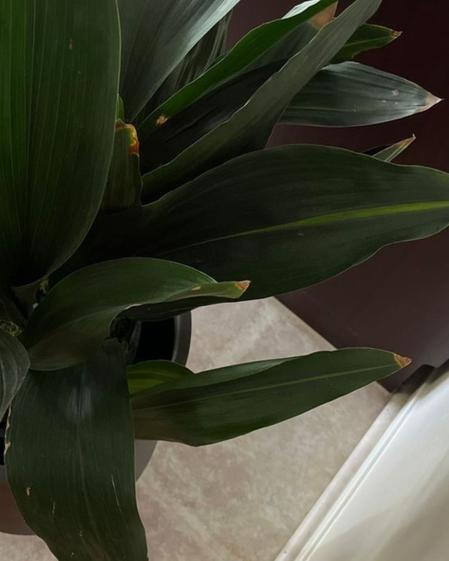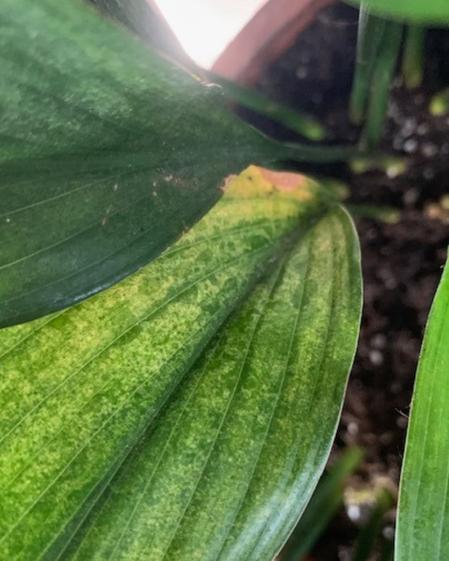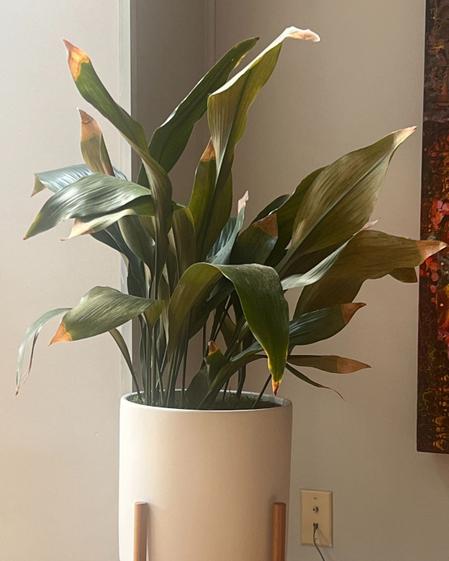Cast Iron Plant Care Guide

With its rich green leaves and nearly indestructible nature, the Cast Iron Plant is a top choice for effortless indoor greenery. This hardy, low-maintenance plant thrives with minimal attention, but there are a few key things to know before bringing one home. From ideal lighting conditions to proper watering techniques and troubleshooting common concerns (though issues are rare!), keep reading to cover all the essentials on Cast Iron plant care.
Simple Care Instructions for the Cast Iron Plant
Light Requirements
Cast Iron Plants thrive in medium to low light conditions. While they can tolerate bright, indirect light, it's best to keep them far away from direct sunlight, as intense rays can scorch their leaves.
Watering Needs
Water your Cast Iron Plant when the top two inches of soil feel dry to the touch. While this plant is not super picky, it does thrive best with consistently light moisture in its soil, so when the top two inches feels dry, that indicates it is beginning to dry out below. Simply check the soil every ten days or so by inserting your finger—if it’s dry, it’s time to water. The key to keeping this plant healthy is avoiding overwatering. Expect to water less in the winter and more during warmer, sunnier months.
For extra accuracy, a moisture meter can be a helpful tool to gauge when your plant needs a drink.
Humidity and Temperature
Cast Iron Plants thrive in typical indoor temperatures between 60–75°F (16–24°C) and can tolerate dips or fluctuations in temperature with no problem.
Cast Iron plants enjoy a nice level of humidty, and you may consider using a humidifer if your environment is very dry.
Soil and Fertilizing
For the best growth, plant your Cast Iron Plant in well-draining soil, such as a high-quality potting mix with added perlite or sand to improve drainage. Avoid heavy, compacted soils that hold too much moisture.
When it comes to feeding, fertilize sparingly. Use a balanced liquid fertilizer once or twice a month during the spring and summer.
Common Problems and Troubleshooting Tips
Yellow or Brown Leaves
Symptoms: Leaves turning yellow or brown, sometimes wilting or drying out.
Cause: Overwatering, underwatering, or too much direct light. Cast Iron Plants prefer evenly moist soil but dislike soggy conditions. Excessive sunlight can also scorch the leaves.
Solution: Ensure your plant is in a shaded or indirectly lit spot, away from direct sunlight. Check the soil before watering—only water when the top two inches are dry. Trim any damaged leaves by cutting them at the base with clean scissors or a blade.
Brown Tips
Symptoms: Dry, crispy brown tips on the leaves.
Cause: Underwatering or mineral buildup from tap water. While Cast Iron Plants are tough, prolonged neglect can cause distress. In some cases, high mineral content in tap water may also be a factor.
Solution: Check the soil moisture—if it’s too dry, increase watering while still avoiding overwatering. If you suspect mineral buildup, try using filtered or distilled water, and in the meantime, flush your plant's soil with filtered water. You can simply trim the brown tips off the plant with scissors.
Speckled Discolored Leaves
Symptoms: Leaves with small, speckled discoloration.
Cause: Cast Iron plants can be prone to spider mites, which are tiny pests that can cause damage to the leaves. They’re often hard to spot, but you may notice webbing on the underside of the leaves. Shaking a leaf over a white surface may reveal tiny specks, which indicate an infestation.
Solution: Don’t worry—your plant can still be saved! Follow our simple guide on how to treat spider mites and restore your Cast Iron Plant to health.

Brown tips on a Cast Iron Plant are often cause of mineral build up in the soil

Sign of spider mite damage

Cast Irons may develop yellow or brown leaves if exposed to too much light
Seasonal Care Tips
Cast Iron plants can struggle if exposed to too much light. During the longer days of summer, consider moving your plant if needed.




